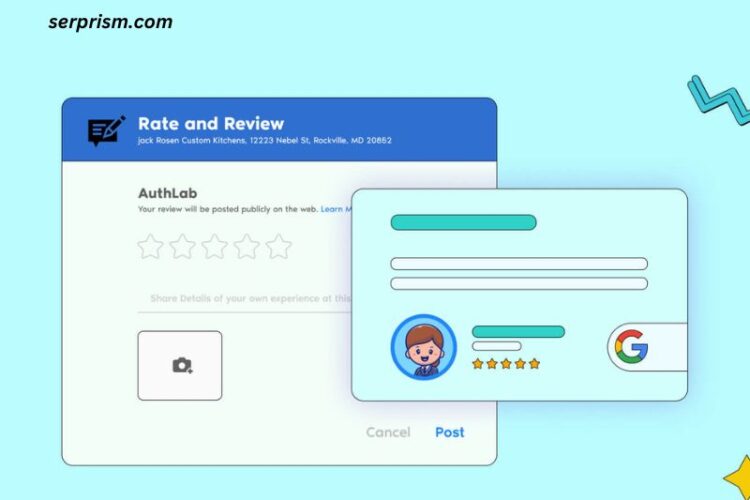
In the competitive world of digital marketing, local SEO plays a pivotal role in driving customers to businesses. While focusing on your core location is essential, there are situations where expanding your local SEO outside of your core location can offer significant growth. Businesses often aim to attract customers from neighboring areas or even cities far from their main hub. However, building local SEO outside your primary area requires a tailored approach to ensure success.
In this guide, we will explore strategies that businesses can employ to grow their local presence beyond their core location. By understanding how to approach multi-location SEO and why it’s essential, businesses can maximize their reach and increase traffic, leads, and revenue.
Why Expanding Local SEO Is Important
Expanding your local SEO beyond your core location can significantly benefit your business by:
- Reaching New Customers: If your business has a product or service that appeals to a broader audience, targeting multiple locations allows you to reach new customers who may not be aware of your offerings.
- Increasing Revenue: Expanding your local SEO outside of your core area can lead to increased foot traffic or online traffic, boosting sales and revenue.
- Building Brand Awareness: Establishing your business in new locations will help create brand recognition, allowing you to become a trusted name in more communities.
Challenges of Expanding Local SEO Beyond Your Core Location
Although expanding local SEO has numerous benefits, there are certain challenges you may face:
- Competition: Every location has its own set of competitors, which may require adapting your strategy to stand out from local businesses that already have a strong presence.
- Google’s Local Pack Limitations: Google typically shows results that are geographically relevant to users. Expanding to areas further away from your core location may require optimization efforts to ensure your business appears in local searches.
- Consistency Across Multiple Locations: Managing multiple locations means ensuring consistent information, branding, and customer experience across the board. Any discrepancies in contact details or other important information can harm your SEO.
Key Strategies for Building Local SEO Outside Your Core Location
To successfully expand local SEO to other areas, businesses must employ a variety of tactics that cater to specific local search behaviors and optimize their online presence accordingly. Let’s explore these strategies:
1. Create Location-Specific Pages
If you are expanding your business to multiple locations, it’s essential to have dedicated landing pages for each area. These location-specific pages help you provide relevant content for users in each location and improve your visibility in local search results.
Best Practices for Location-Specific Pages:
- Unique Content: Write unique content for each location. This can include information about the services or products you offer, specific details about your business in that area, and local customer testimonials.
- Local Keywords: Incorporate local keywords into your content. If you are targeting “plumbing services in San Diego” and “plumbing services in Los Angeles,” ensure that these specific keywords are present on each location’s page.
- NAP Consistency: Ensure your Name, Address, and Phone number (NAP) are accurate and consistent across all location-specific pages and listings.
2. Optimize Your Google My Business (GMB) Listings for Each Location
Google My Business is one of the most powerful tools for local SEO. Having a well-optimized GMB profile allows your business to show up in Google Maps and local search results. When expanding outside your core location, you should create and optimize a GMB listing for each location.
Steps to Optimize Your GMB Listings:
- Claim and Verify Each Location: If your business has multiple locations, you need to claim and verify each one through GMB.
- Accurate Information: Ensure all the information, including your business name, address, phone number, and business hours, is consistent across listings.
- Local Reviews: Encourage reviews from local customers for each location. Positive reviews boost your local rankings and increase trustworthiness.
3. Leverage Local Citations and Directory Listings
Local citations (mentions of your business on other websites) and directory listings are critical for establishing local presence. Sites like Yelp, TripAdvisor, and local business directories allow you to list your business, making it easier for customers to find you.
How to Build Citations for Multiple Locations:
- List Your Business on Local Directories: For each new location, add your business to local directories in that area.
- Use Location-Specific NAP Information: Ensure that the name, address, and phone number for each location are correct on every directory.
- Avoid Duplicates: Duplicate listings can confuse customers and search engines, so make sure each location has a distinct listing.
4. Create Locally Relevant Content
Content marketing is an essential aspect of SEO, and when expanding to new locations, it’s crucial to create content that resonates with each local audience. Locally relevant content can range from blog posts about events happening in the area to guides tailored to specific regional concerns.
Content Ideas for Multi-Location Businesses:
- Local Guides: Create content that speaks to the local community. For instance, a restaurant chain could write blog posts about the best dishes to try in each location.
- Localized Case Studies or Testimonials: Showcase success stories from customers in each specific area.
- Event Participation: Write about events, charity work, or partnerships your business is involved in within each location.
5. Build Local Backlinks
Backlinks are essential for local SEO, especially when building your presence outside your core area. Building links from reputable, local websites to your location-specific pages helps search engines understand that your business is relevant to that area.
Effective Ways to Build Local Backlinks:
- Partner with Local Businesses: Collaborate with other local businesses and request backlinks to your website.
- Local Sponsorships and Events: Sponsor local events or organizations and ask for a backlink on their website.
- Guest Blogging on Local Sites: Write guest posts for blogs or news sites specific to each area you’re targeting.
6. Use Geo-Targeted Paid Ads
While organic local SEO can take time to build, paid advertising can help you gain visibility in new locations quickly. Geo-targeted ads, such as Google Ads or social media ads, allow you to target potential customers in specific geographic areas.
Tips for Running Geo-Targeted Ads:
- Local Keywords: Use location-specific keywords to reach your target audience.
- Set Geographic Boundaries: Set your ads to appear only to users within certain areas, ensuring your budget is spent on relevant clicks.
- Local Promotions: Use location-based promotions or offers to entice customers in the specific areas you are targeting.
7. Optimize for Mobile Users
A significant portion of local searches is performed on mobile devices. Ensuring that your website is mobile-friendly is vital for capturing users in the new areas you’re targeting. A responsive, fast-loading website will help improve the user experience, which is a critical ranking factor for search engines.
Mobile Optimization Tips:
- Responsive Design: Make sure your website adjusts to different screen sizes and devices.
- Fast Load Times: Compress images and eliminate unnecessary elements to ensure your pages load quickly.
- Mobile-Friendly Navigation: Simplify your navigation for mobile users, making it easier for them to find the information they need.
8. Monitor Your Performance with Local SEO Tools
As you expand your local SEO efforts, monitoring the performance of each location is crucial to measure success and make necessary adjustments. There are several tools you can use to track your rankings, traffic, and conversions.
Tools to Use for Multi-Location SEO:
- Google Analytics: Track visitors, bounce rates, and conversions from different locations.
- Google Search Console: Monitor your rankings and optimize your site for specific local keywords.
- Rank Tracking Tools: Use tools like BrightLocal or Moz Local to track keyword rankings and NAP consistency across various directories.
Conclusion
Building local SEO outside your core location is a powerful strategy for expanding your business and reaching new customers. By creating location-specific content, optimizing Google My Business listings, and leveraging local directories and citations, businesses can establish a strong presence in multiple areas. Additionally, using locally relevant content, paid advertising, and mobile optimization will ensure that your business is easily accessible to potential customers in different regions.
Expanding local SEO requires a strategic approach, but with the right techniques, your business can thrive in new markets and communities. Keep monitoring and adjusting your strategy to ensure long-term success across all your target locations.




